Growing strawberries is great way to add lasting flavor to your landscape.
Spring is coming, and that means strawberry season is just around the corner!
Nothing can beat the taste of fresh strawberries, homemade strawberry pie, or delicious strawberry jam. Or for that matter, anything strawberry!
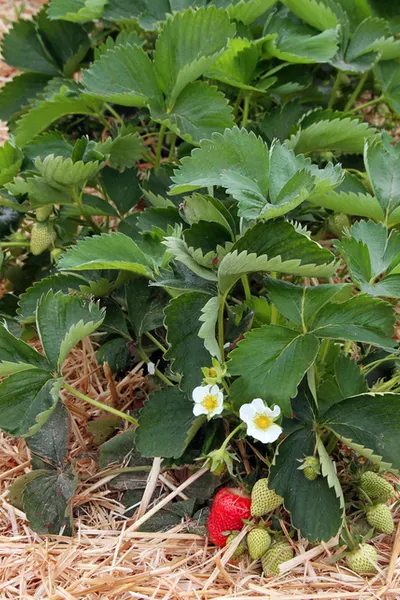
And you might be surprised at just how easy a small strawberry patch is to plant, grow and maintain.
Contrary to what many think, strawberries are actually a low-maintenance crop.
As a perennial crop, they continue to produce year after year, providing fresh berries for all of your favorite strawberry treats.
Growing Strawberries – The Basics
Strawberries can be divided into two main categories.
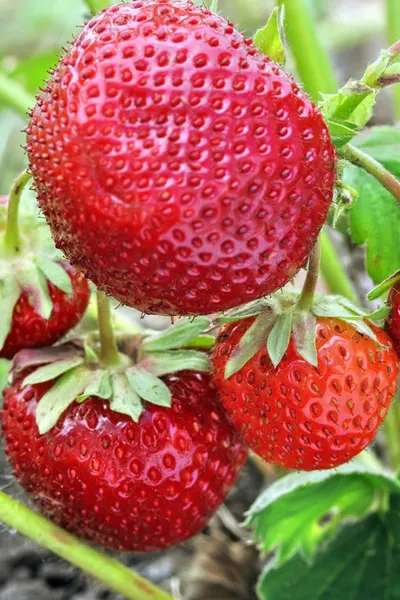
June bearing, (often called spring-bearing), produce one large crop early in the growing season. Everbearing, on the other hand, produce all throughout the season, but with few berries at one time.
Here is a quick overview of each:
June bearing strawberries bear their entire crop over approximately a three-week period.
This occurs in most growing zones in June – hence the name.
June bearing strawberries tend to be larger and more plump. These are the strawberries you most often see in the grocery aisles or at farmers markets.
On the other hand, everbearing plants produce a smaller-sized berry.
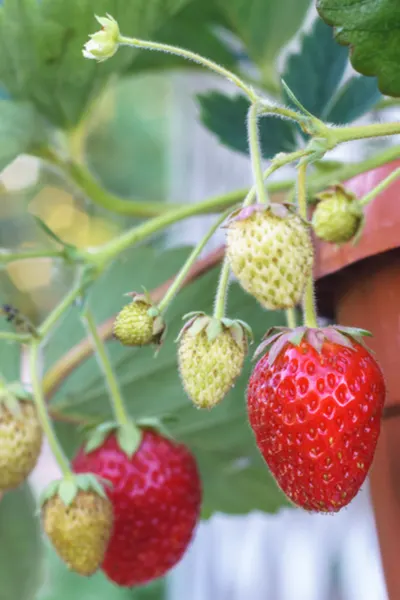
But they do so continuously. From early June until the first frost.
Everbearing varieties are an excellent choice for patio planters and small spaces.
They are also perfect for those looking to have a supply of fresh berries on hand all summer long.
Growing Strawberries – The Keys To Success
Each variety has a bit of different requirements to grow.
We will take a look at both, starting with June bearing strawberries.
June Bearing Strawberries
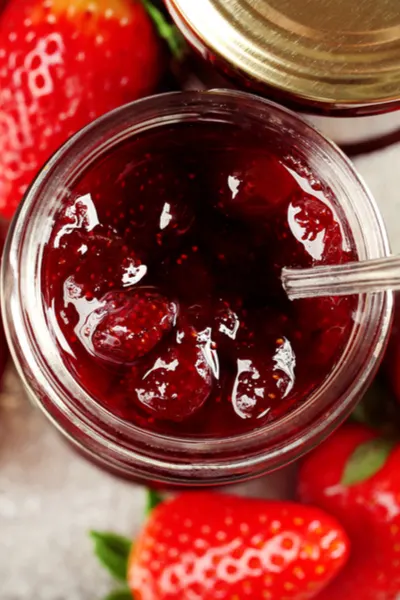
Top Varieties To Grow : Mayflower June Bearing Strawberry Plants, Sparkle June-Bearing Strawberry Plants
In climates that have more of a true winter, plant strawberries in the early spring. A good rule of thumb is about 2 to 3 weeks before the last frost.
For warmer climates, you can plant in the early spring as well, However, it is even better to plant in late fall in these regions.
It sets the stage for bigger crop the first spring.
When And How To Plant
June bearing strawberries need to be planted on slightly raised ground from the surrounding soil.
Begin by working in generous amounts of compost to the soil before planting.
It is a good idea to cover the area with plastic or landscape fabric before planting. This aids greatly in keeping competing weeds from taking over bed space.
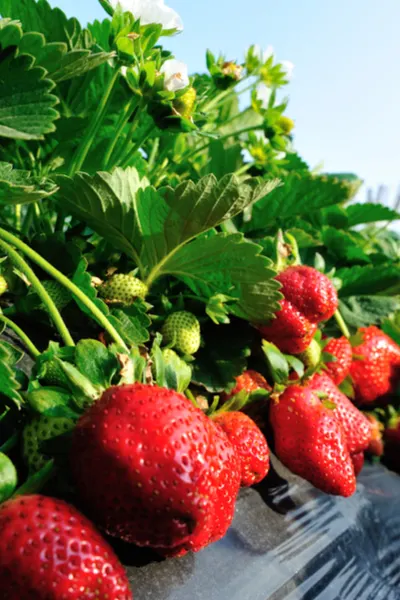
If planting in rows, set plants 10 to 12″ apart in the rows.
You can plant in single rows about 12” wide – or double rows that are 24” wide. For easy picking, allow at least 24” between rows.
Next, cut out holes for plants through the barrier with a sharp knife. This allows easy access to plant and water.
Set plants so that the upper portion of the crown is slightly above the level of the ground.
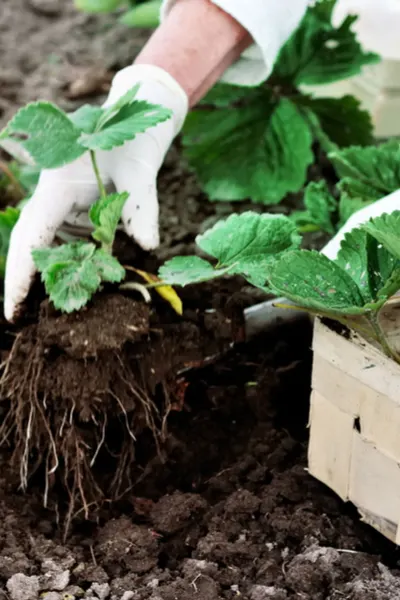
The crown is the portion of the plant directly above the root area and below the first set of leaves. Water the roots well before covering with soil.
As you plant, press in the soil gently around the roots. This prevents the plants from heaving out of the soil.
Next, mulch with straw to help regulate soil temperatures and keep berries protected
Long Term Care
In late fall, mow, or use a string trimmer to trim back plants. Trim back to an inch or two above ground level.
Fall is a great time to mulch around plants with compost too. The compost breaks down and adds nutrients to the soil.
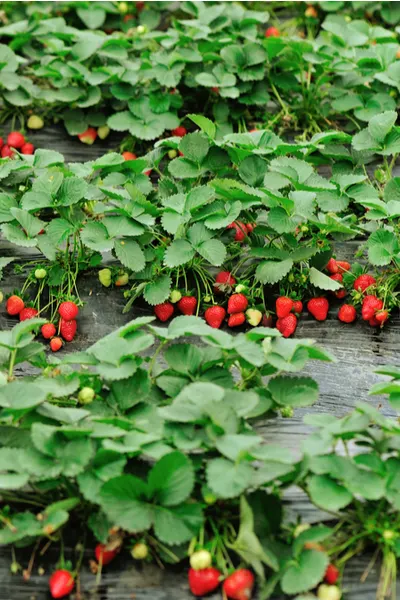
This helps feed it for the following year’s crop.
Next, apply a few inches of straw or pine mulch over the top of plants. This will help protect them through the cooler winter months.
Because strawberries prefer the soil to be more on the acidic side, pine needles make an excellent mulch if available
Growing Strawberries – How Long Will My June Bearing Plants Last?
Although a perennial, strawberry plants do decline in production as they age. But there is no need to purchase new plants.
After 4 or 5 years, you can replace the older plants with the new growth of offshoots.
This can be done in mid-summer, after the plants have finished fruiting. It gives the plants enough time to become re-established before fall.
This helps to keep strawberry plants and beds at their productive peak.
Growing Strawberries – Everbearing
Top Varieties To Grow : Quinalt Everbearing Strawberry Plants, Seascape Everbearing Strawberry Plants
For containers strawberries, the emphasis is on keeping the soil in the container productive.
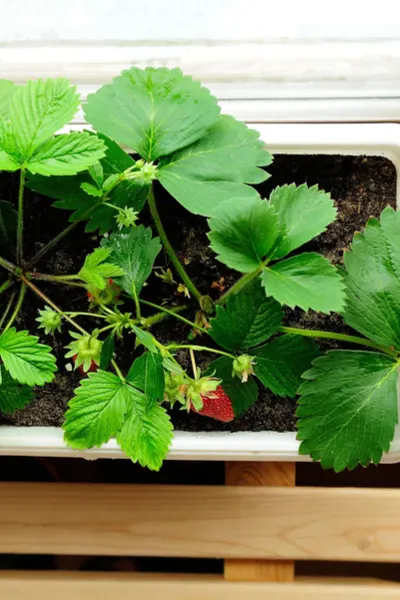
Be sure to provide plants with plenty of loose, fertile soil to provide adequate nutrients. Pots should be at least 6″ deep for good root growth.
A light application of fertilizer every month during the growing season will help plants to keep producing. compost and worm casting work great for this.
Potted plants can be brought inside in the winter months for protection. A dark, cool basement or garage will usually work perfectly.
Much like with June bearing, pots should be replanted with newer offshoots every 3 to 5 years.
Looking for more info on growing strawberries? Check out our article: The Secret To Fertilizing Strawberry Plants – Why You Need To Fertilize Early!

This Is My Garden is a website dedicated to spreading the love and knowledge of gardening around the world. We publish two new garden articles each week. This article may contain affiliate links.
